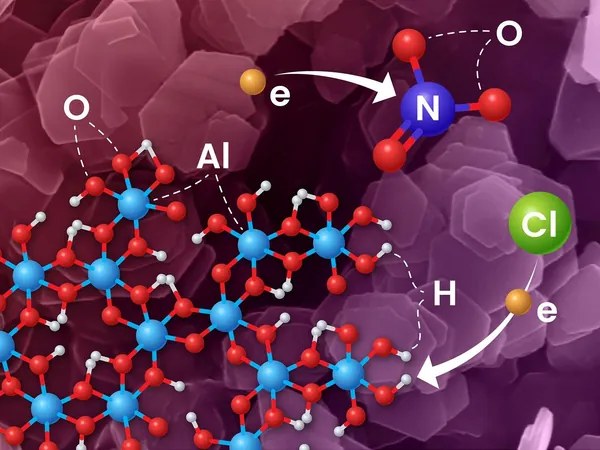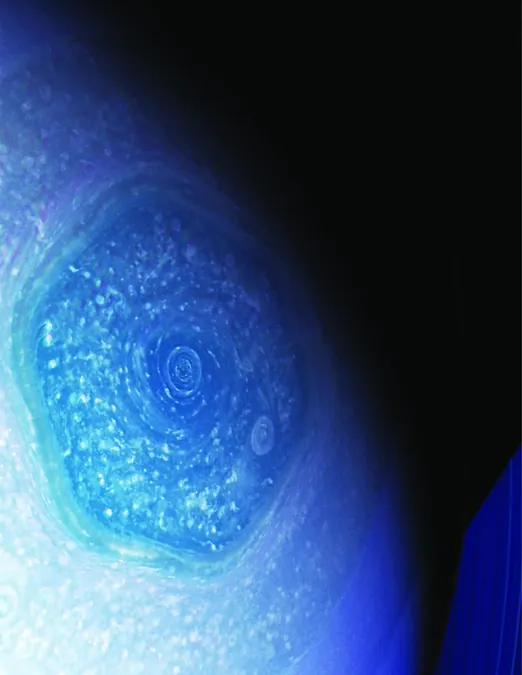
Hidden Threats: How Impurities in Gibbsite Compromise Hydrogen Stability After Irradiation!
2024-10-08
Author: Li
Introduction
In the shadow of the Cold War, the Department of Energy's Hanford Site in Washington State became a critical hub for plutonium production, utilizing aluminum extensively as a fuel cladding material. The repercussions of this extensive processing contribute to a complex environmental legacy, particularly in the form of underground holding tanks filled with irradiated waste products where compounds like boehmite and gibbsite reside.
Recent Research Findings
Recent research, published in the journal *Physical Chemistry Chemical Physics*, has shed light on a previously underexplored aspect of this legacy: how residual impurities from the production process impact the stability of hydrogen atoms within gibbsite, a mineral that forms as a result of aluminum processing. Drawing parallels with boehmite—which is known for its capacity to stabilize hydrogen—this study delves into the complex interplay of trace species and their effects on gibbsite's behavior under irradiation.
Importance of Study
Understanding how aluminum (oxy)hydroxides can serve as radiolytic substrates is crucial not only for energy sector advancements but also for making strides toward security and decarbonization. These findings are also essential for the management of radioactive waste, which poses a significant environmental challenge.
Key Discoveries
The study unveiled that the presence of residual impurities from various synthetic precursors, such as aluminum nitrate (Al(NO3)3) and aluminum chloride (AlCl3), critically impacts the generation and stabilization of hydrogen atoms formed in gibbsite nanoplates under gamma radiation. Researchers found that hydrogen atoms trapped in the layers of gibbsite were fewer and decayed more rapidly compared to the same atoms in boehmite. This difference underlines the intricacies involved in managing radioactive waste and points to the need for detailed analysis.
Methodology
To illustrate this, the researchers employed diffuse reflectance infrared Fourier transform spectroscopy to examine hydroxyl groups in gibbsite samples synthesized from both nitrate and chloride precursors. Their investigation revealed that while the traces of such residual ions—approximately 0.4 atom percent of nitrate and 0.6 atom percent of chloride—were minimal, their influence on radiolytic behavior was significant.
Findings on Hydrogen Production
Furthermore, electron paramagnetic resonance spectroscopy was utilized to probe the existence of hydrogen atoms across varying radiation doses. Results showed that hydrogen was produced in gibbsite synthesized with chloride, yet none could be detected in nitrate-based gibbsite. This discrepancy suggests that while hydrogen atoms might form under both conditions, they are effectively trapped only in the absence of nitrate.
Implications of the Research
The implications of these findings could be far-reaching. As the energy sector continues to evolve towards sustainable practices, understanding the stability of elements like hydrogen in the context of radioactive waste can enhance safety protocols and improve waste management techniques. With legacy sites like Hanford remaining a crucial focal point for ongoing environmental remediation efforts, the findings of this study mark a significant step in unraveling the complex chemistry of waste materials.
Conclusion
This research not only highlights the importance of comprehensively studying materials derived from past industrial processes but also raises awareness about the persistent effects of pollutants, both visible and hidden, in our environment. Stay tuned as we follow developments in this fascinating intersection of chemistry and environmental science!


 Brasil (PT)
Brasil (PT)
 Canada (EN)
Canada (EN)
 Chile (ES)
Chile (ES)
 España (ES)
España (ES)
 France (FR)
France (FR)
 Hong Kong (EN)
Hong Kong (EN)
 Italia (IT)
Italia (IT)
 日本 (JA)
日本 (JA)
 Magyarország (HU)
Magyarország (HU)
 Norge (NO)
Norge (NO)
 Polska (PL)
Polska (PL)
 Schweiz (DE)
Schweiz (DE)
 Singapore (EN)
Singapore (EN)
 Sverige (SV)
Sverige (SV)
 Suomi (FI)
Suomi (FI)
 Türkiye (TR)
Türkiye (TR)